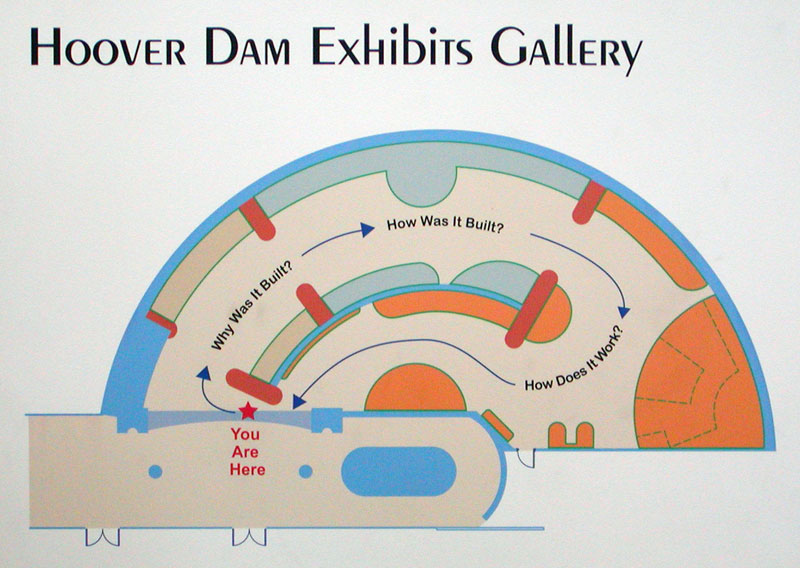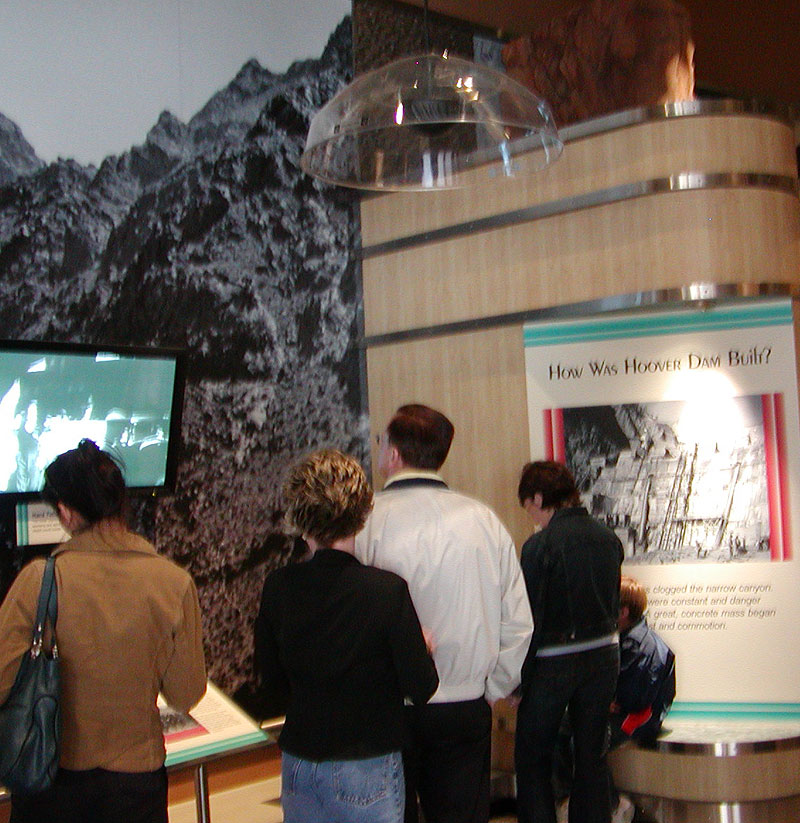EDTEC 671: Learning Environment Design
Informal Learning Exhibit: Hoover Dam
Resources:
- Exhibit Observation Protocol (48kb .doc, added 3/22/07)
- Hoover Dam Exhibit Observation (434 kb .doc, added 3/31/07)
- Hoover Dam Exhibit Movie (901kb .mov, added 3/31/07)
- Hoover Dam "Reclamation" flyer ( 974kb .pdf, added 4/1/07)
The Hoover Dam Exhibits Gallery
Casing an informal learning environment
To gain an appreciation for an informal learning environment, I visited Hoover Dam and went on their “Discovery Tour”. I’ve always been interested in power generation, and large Civil Engineering projects, so the Dam was a perfect venue.
Personal Interaction
I was engaged by the exhibit from the start. The Hoover Dam includes many artistic touches into its overall function, in the 1930s “Art Deco” style. The exhibit made sure to incorporate a similar style throughout the various displays, up to including colors and fonts.
The exhibit starts with the events leading up to construction (called “Why was it built”), then covers the construction itself (or “How was it built?”). The initial exhibits use short movies, such as a time lapse film of the three year construction effort, mannequins dressed like the workers, and audio files of workers using their local “slang” to bring you back in time. Finally, the exhibit shows the function of the dam (“How does it work?”). You are able to generate electricity with a hand-cranked model, then walk through a life-sized model of a generator to experience just how big they are. The final display gives the user a chance to operate a simulation of the power plant, while trying to increase the dam’s output in response to a heat wave in California.
Audience Interaction
People are attracted to the Hoover Dam because if its historical significance as a major success story during the Great Depression. What the exhibit designers wanted their audience to understand was the larger role of the dam in bringing life to the desert. The waters behind the dam constitute Lake Mead, which provides electrical power and irrigation to six states. The audience is drawn into the exhibit by being shown the relevance to their lives, then is given extending information about the construction process and current operation. The scale of the dam is made apparent by the size of certain exhibits, such as the full scale generator and cement buckets.
Technology is used well throughout the exhibit. In this photo, audience members are viewing a movie which describes several construction processes. The exhibit uses directional overhead speakers from Soundtube, which are amazingly effective. The exhibit is presented entirely in English, though basic flyers are available in several other languages.
Impressions
It is clear a lot of time and thought went into making this exhibit interesting. All exhibit elements seem to blend into the entire Hoover Dam experience. Even the shape of the exhibit hall matches the shape of the dam. The directed audio is a master touch, allowing people to listen at different stations without adding to the general noise level. The displays are interactive and appropriate for the material. For example, a revolving board mirrors the revolving turbines, and a hand-powered generator shows the principle behind power generation. The simulated heat wave scenario is a classic Keller ARCS guided exercise. The exhibit designers could have considered a more linear approach to their displays, which caused people to zig-zag back and forth between both sides of the hallway. They could also have paid more attention to lighting, which tended to glare off the angled displays, making some spots unreadable in the harsh light. Overall, this exhibit was one of the better ones I’ve experienced.

